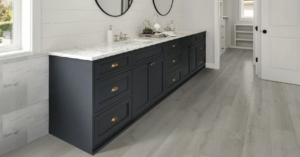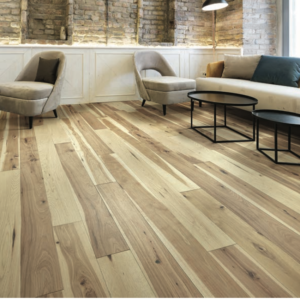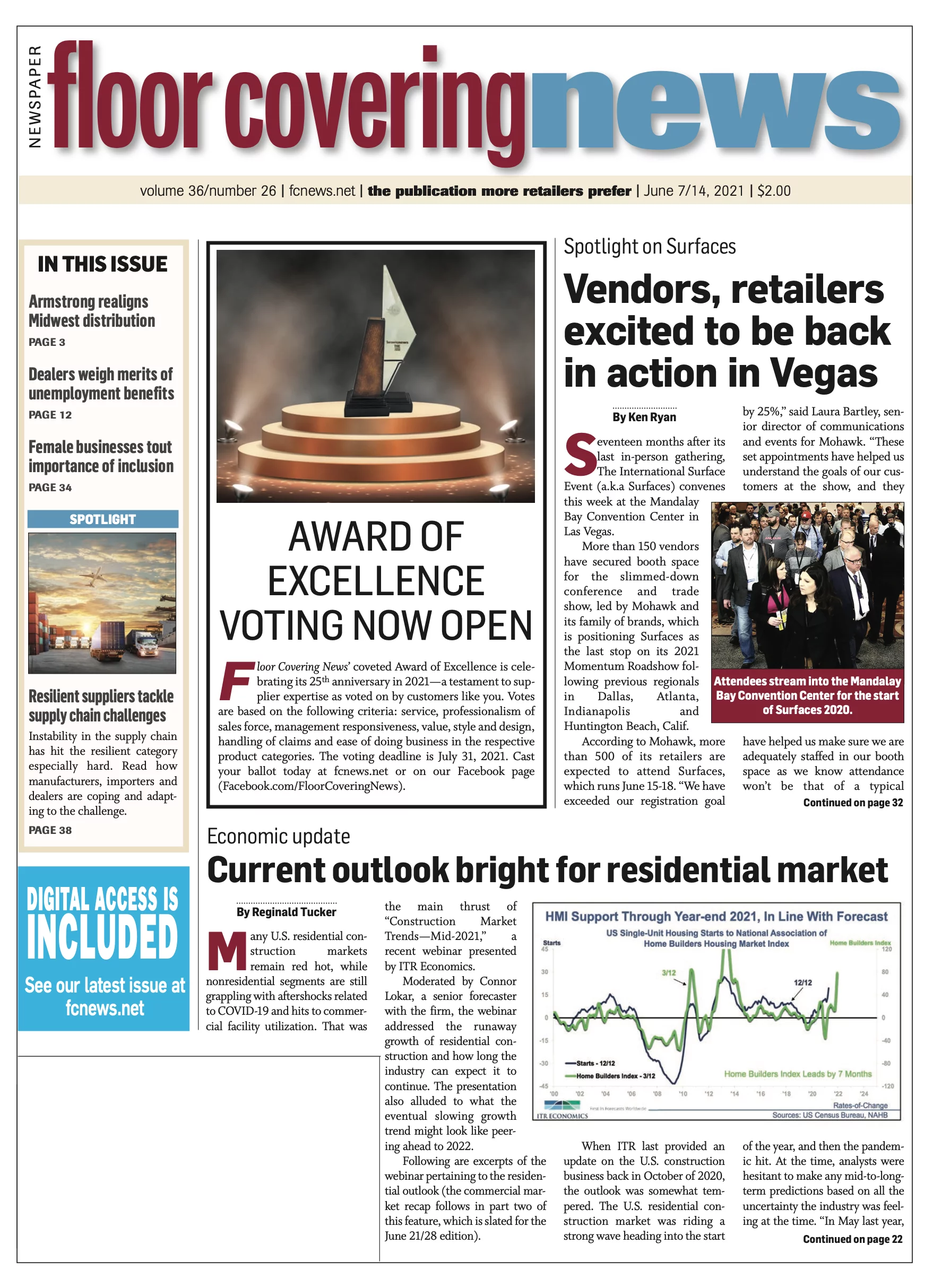
By Ken Ryan and Reginald Tucker Consumers may not know an SPC from a WPC but they can relate to waterproof flooring. It’s what draws them into retail showrooms and helped fuel the runaway sales of the resilient flooring category.
Flooring retailers splash their showrooms with “waterproof” signage because they know it resonates with today’s consumer. At the same time, however, “waterproof” comes with an asterisk—as it is not impervious to water damage should, for example, a home flood even from a dishwasher gone awry.
Retailers are increasingly caught in the middle between manufacturer claims and consumer expectations. Try as they might to inform consumers of the product’s actual capabilities, if there is a flood at home and the floor needs replacing, dealers are often left holding the bag when it comes to honoring warranties.
“I am frustrated that manufacturers can make such general claims about water and performance on marketing materials, yet never have to stand behind the actual issues a homeowner will face,” said Jon Dauenhauer, co-owner of Carpet World Bismarck in North Dakota. “The fine print of a warranty is confusing to most.”
For retailers, waterproof is obviously a great story to tell the consumer. But while explaining the benefits retailers must make sure to manage their customers’ expectations or incur their wrath if something goes wrong later. “Setting proper expectations is the key to success,” said Adam Joss, co-owner of The Vertical Connection Carpet One Floor & Home, Columbia, Md. “We explain that it’s waterproof for everyday life; it provides protection against spills, drips and pets. Have a flood? That’s what insurance is for.”
John Taylor, owner of Taylor Carpet One Floor & Home, Fort Myers, Fla., is used to dealing with moisture issues as manager of multiple Carpet One stores as well as Pro Source locations in southwest Florida. “I worry about these [claims] being oversold,” he said. “We’ve taken a position where we train our salespeople to tell people there are limitations on these warranties. If there is a flood, it is considered a catastrophic event and, therefore, it is an insurance event—not a warranty event.”
Taylor goes one step further than most by providing moisture testing on every LVP, laminate and wood job prior to and after the installation. The consumer pays for the testing but does so willingly, he added. “What ends up happening is if you put a waterproof floor over a subfloor with a moisture issue you end up trapping the moisture in and you eventually have a mold issue,” Taylor explained. “If it goes on for a long time, you can have breathing issues from the mold. We test every job, and we give them the results—70% to 75% of jobs come back just fine. With the other 25% to 30% we discuss moisture mitigation and will put a sealer on the floor.”
For some retailers, the concept of waterproof can have separate meanings for all involved. “The problem for retailers is this: what waterproof means to the consumer and what it means in regard to warranties are two entirely different things,” said Penny Carnino, COO at Grigsby’s Carpet, Tile & Hardwood in Tulsa, Okla. “Promising more to consumers with already over-the-top expectations makes our lives tough; a lot of the time all they hear is ‘waterproof’ and no matter how many times we explain that that is for topical spills they don’t hear it. We do love LVP, and like most retailers it’s our No. 1 product. But it’s so important to educate the consumer and keep their expectations realistic.”
Manufacturers’ role

For their part, flooring suppliers say they honor claims in cases where a defect has been determined. This has historically been the case, manufacturers argue, long before the advent of waterproof floors. However, suppliers say they realize there is tremendous power behind marketing language, and it’s important to use that power responsibly.
“This is really an area where we, as an industry, have done a disservice to the RSA and consumer,” said Dan Natkin, vice president, wood and laminate, Mannington. “The reality is floors need to be able to stand up to spills and minor accidents. Whether they are water resistant or waterproof is just a matter of semantics. In a flood, the flooring will need to be replaced because water will always find a path of least resistance.”
Natkin said Mannington emphasizes this point in its warranty and marketing literature. “It is frequently a topic when talking with RSAs,” he noted. “However, most sophisticated RSAs understand this and guide the consumer appropriately.”
For suppliers like Cali, which offers a variety of natural and engineered product categories (a higher percentage being resilient these days), both “waterproof” and “water resistant” are terms utilized in its offerings. According to Doug Jackson, president, it all depends on the specific product category. “We market our SPC products as waterproof, and we’re having no issues with that,” he told FCNews.
The waterproof vs. water-resistant dilemma extends beyond resilient and laminate, though. With new categories such as engineered hybrids emerging, the issue has also spilled over into hardwood or wood-based flooring materials. A prime case in point is the Raintree brand of engineered wood/rigid core floors from American OEM. “It has a real wood veneer glued to a waterproof SPC core; the wood veneer is protected by waterproof coatings,” said Don Finkell, founder and CEO. “We are confident enough with the performance of our Raintree floors to recommend them in bathrooms—an area formerly off limits to wood floors.”
On the broader dilemma surrounding waterproof vs. water resistant, Finkell said it could be a difference without a distinction. “The line between waterproof and water resistant is not precisely defined as far as I know,” he said. “I define it based on test results. Our Raintree product—which is classified by the National Wood Flooring Association as a ‘composite wood’ floor—shows no sign of water absorption after seven days of being submerged in water. We consider that good enough to be labeled waterproof.”
But what about innovations utilized in 100% solid or engineered hardwood floors that tout the ability to resist water incursion? Finkell said these products can be enhanced to better compete in the water-resistant category as well. As he explained: “Our traditional wood floors, Hearthwood and American OEM private labels, are made with a six-sided coating system we call WetWorx Splatter and Spill Guard. Compared to an untreated engineered wood floor—after three days of submersion in water—water absorption is reduced by 250%.”
Some proponents of 100% resilient floors say the push to incorporate water-resistant features in real hardwood flooring products is a move to recoup lost market share—one that could damage the wood category at large. But some hardwood enthusiasts don’t see it that way. “Wood floors have been used for centuries and up until now they have not had much resistance to water,” Finkell added. “But, with improved technology, it’s now available, so why not get it?”

